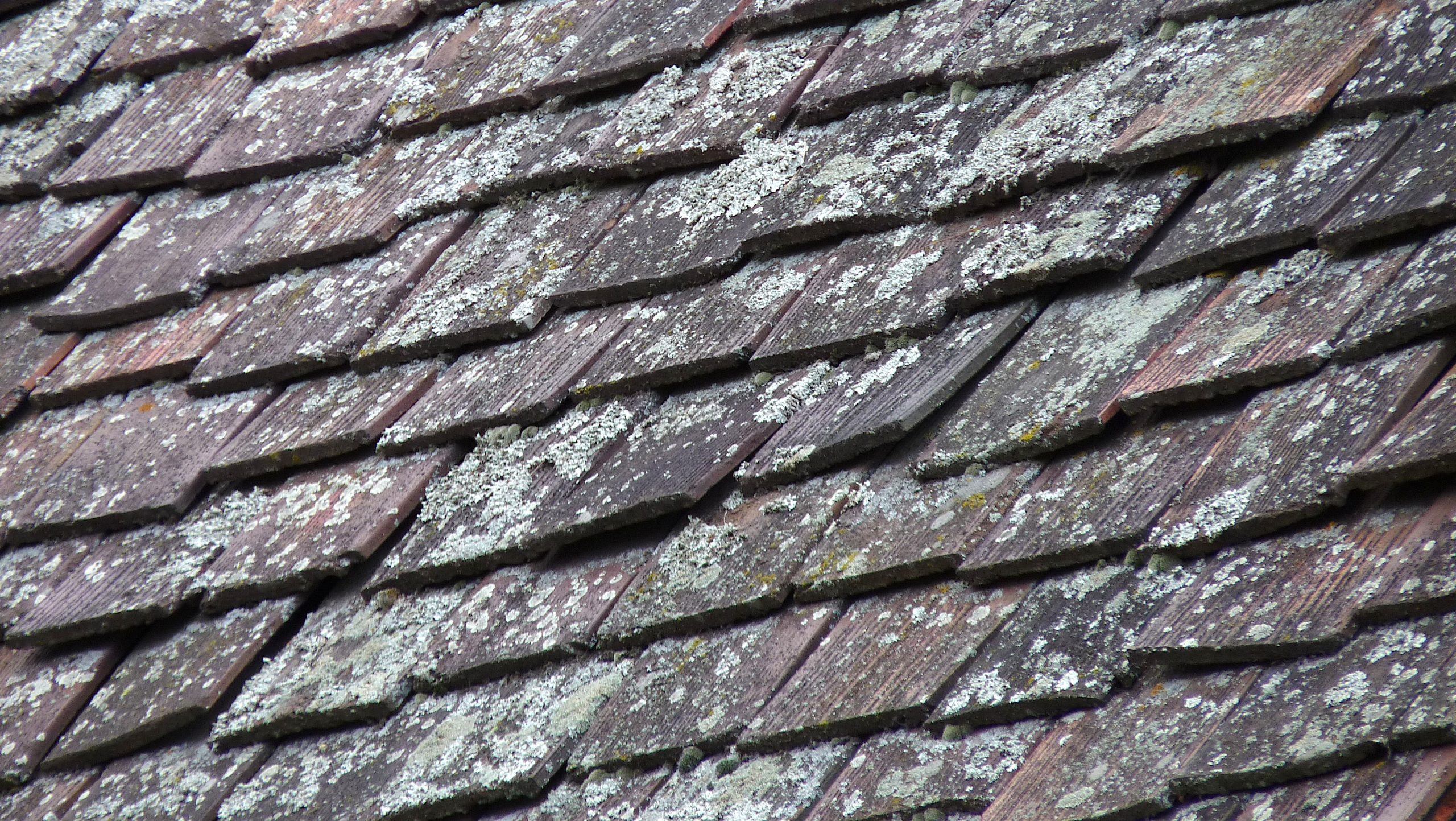What to consider:
- What type of tile is it?
- What point has it reached in its service life?
- Are there problems?
- Normal aging
- The result of environmental conditions (wind/hail)
- Premature failure
Clay tiles have been used for a long time. They're manufactured using a casting process. Molds are filled with fine, wet clay, and then baked in a kiln until vitrification takes place.
Vitrification
Vitrification happens when the various minerals in clay change and bond chemically to form a single, dense, non-porous tile. Full vitrification turns clay into a glass-like material. For clay tile, the vitrification process is key to long-term durability. Incomplete vitrification will result in the finished tiles being more porous, which means they'll absorb moisture more easily.

Biological growth is a sign that clay tiles have been absorbing water and remaining damp. Tile becomes more absorbent with age.
Porosity
When moisture in tiles freezes, it expands, causing delamination and surface deterioration or spalling. Low-quality tiles are more porous and more vulnerable to freeze damage and to developing biological growth. Glazing is sometimes applied to the top surface of tiles for decorative effect and to help reduce moisture adsorption. Both clay and concrete tile installed in areas subject to freezing temperatures should comply with ASTM manufacturing standards designed to prevent freeze damage. You won't know whether tiles comply with any standards unless documentation is provided.
This is just background information; inspectors are not required to confirm compliance with manufacturing standards.
Density
The density of the tile is an indication of its durability; durable tiles are more dense than low-quality tiles. Tile density is determined by the fineness and purity of the clay, and the duration and temperature of the firing process.
Microcracks
Clay that has been inadequately worked before firing can develop microcracks during the firing process. When exposed to freeze/thaw cycling over the long-term, these cracks can grow, making the tile more absorbent.
Flaking
If tile exhibits flaking, dislodge some flakes. If the underlying clay has biological growth, flaking is natural aging. New, clean clay indicates premature failure.
